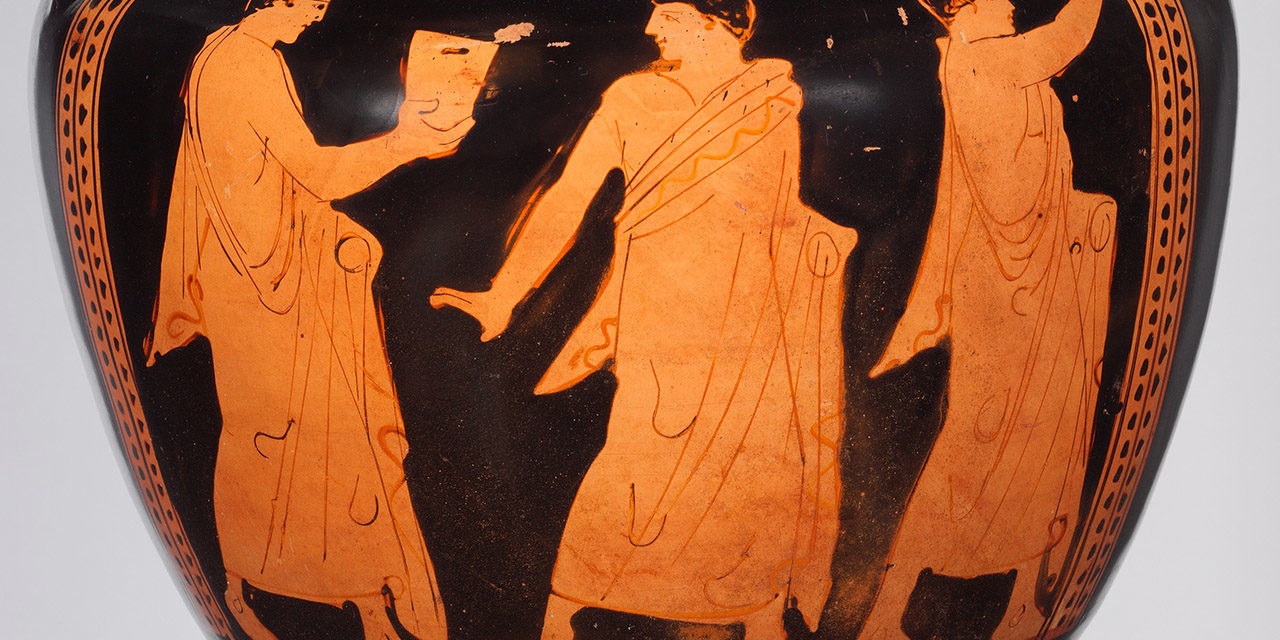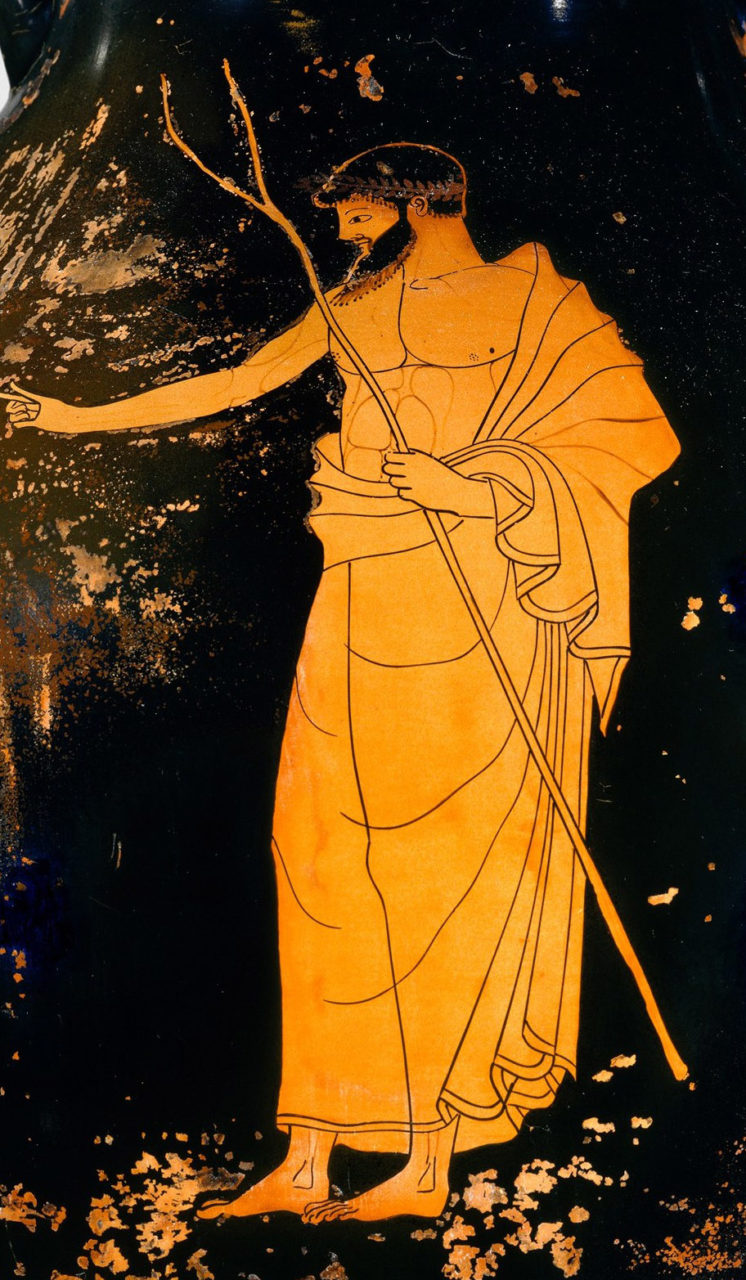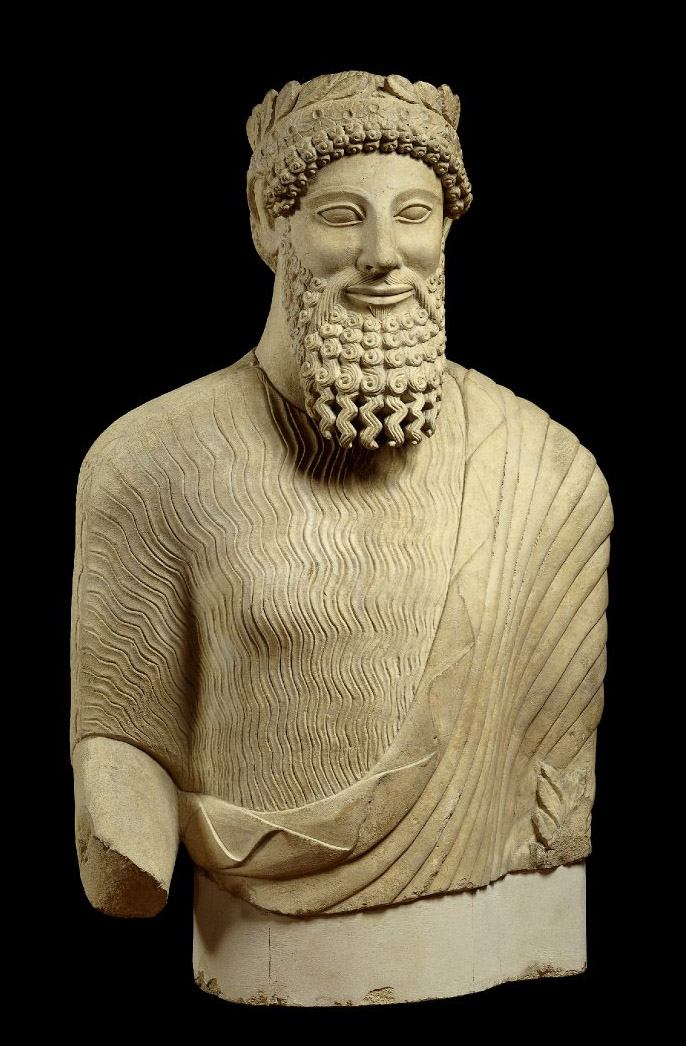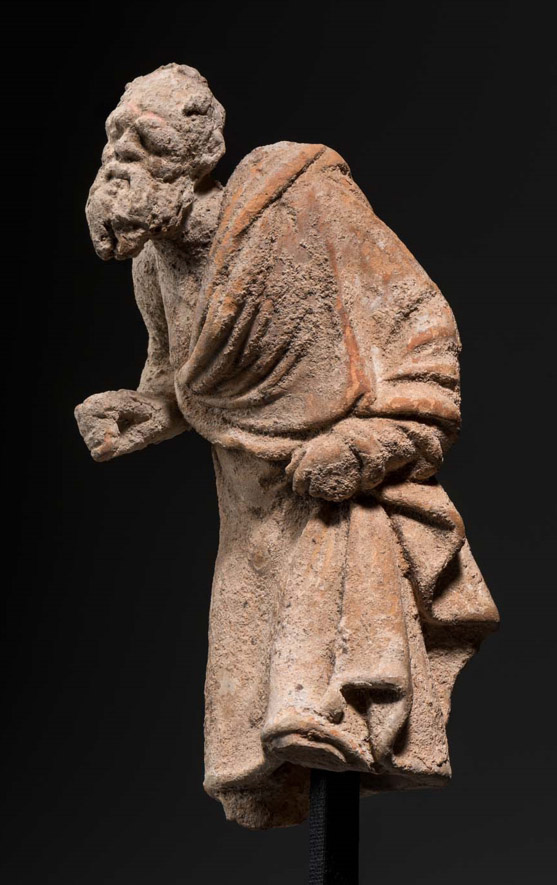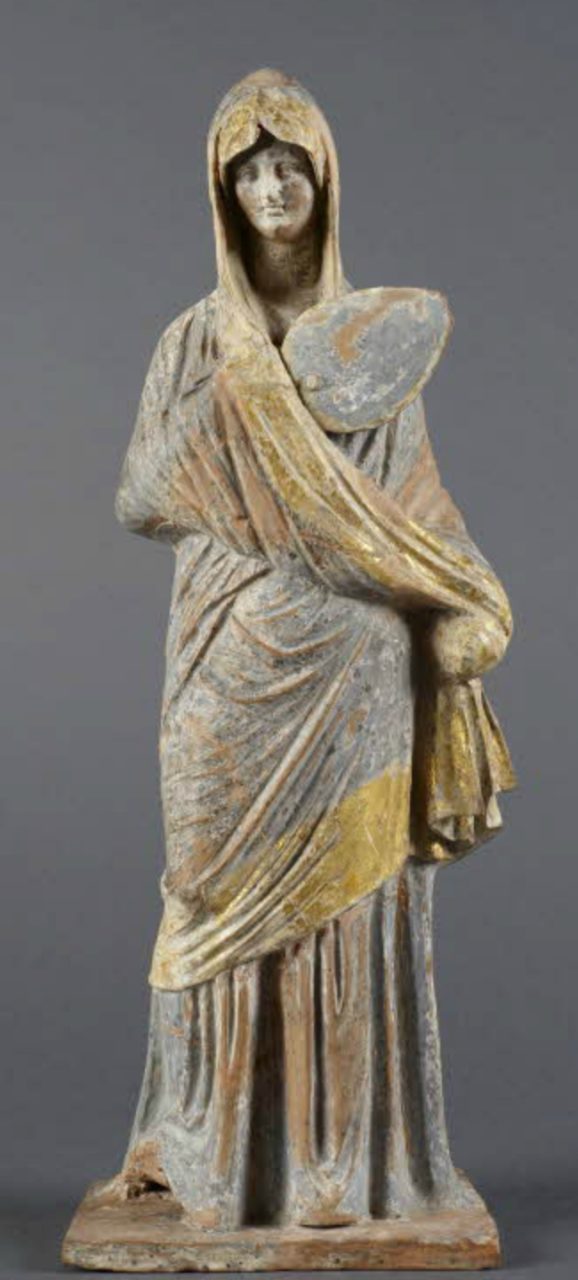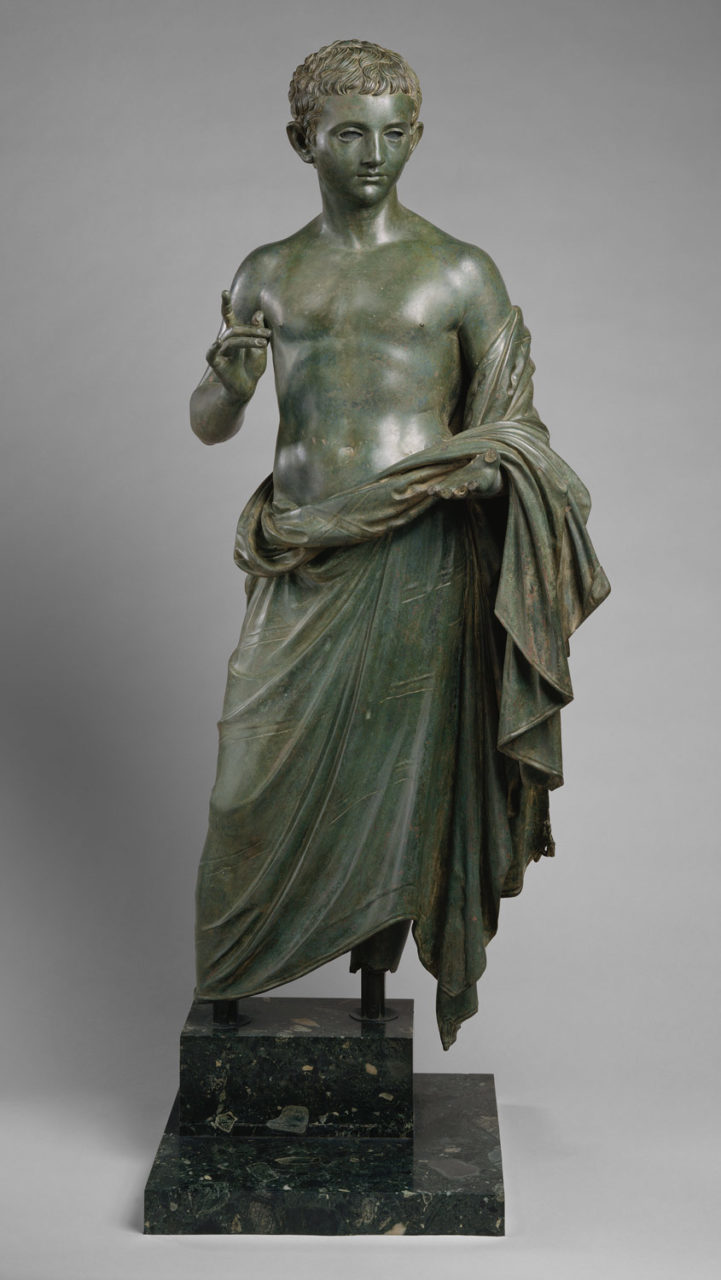An rectangular cloak wrapped around the body and thrown over the left shoulder worn by the ancient Greeks.
The Details
Webster’s Dictionary offers a very basic definition of a himation: “A rectangular cloth draped over the left shoulder and about the body and worn as a garment in ancient Greece.” The red-figure depiction of a judge by the Berlin Painter (Fig. 1) shows the himation when worn alone.
The Dictionary of Fashion History offers a bit more detail: “The outer garment worn over the chiton, described as an oblong piece of cloth thrown over the left shoulder, and fastened either over or under the right.” In the British Museum’s 450 BC limestone statue of a man (Fig. 2) you can see the himation being worn as an outer cloak over a chiton as the dictionary describes.
Mireille Lee gives a broader overview of the history of the himation in the Berg Encyclopedia of World Dress and Fashion:
“The himation, a wrapped woolen garment, was worn by both sexes. In early periods, the himation was worn over the chiton, but, by the middle of the fifth century BCE, men wore the himation alone. As an unshaped rectangle of wool, the himation could be arranged in a variety of ways and served as an important means of nonverbal communication. A properly arranged himation conveyed elite status, while garments in disarray created opportunities for bodily display in homosexual and heterosexual courtship. Women employed the himation as a veil when in the presence of strangers.”
Figures 3 & 4 show men of different statuses wearing the himation–young revelers (Fig. 3) and an old man (Fig. 4). La Dame en bleu (Fig. 5) depicts a woman wearing a himation as a veil. As Evans notes in Costume throughout the Ages (1950): “The himation was as significant to the Greek as was the toga to the Roman” (17).
Tortora and Eubanks in their Survey of Historic Costume (1989) describe the draping of the garment:
“Various methods of draping the himation, are depicted by artists, but the most common way of wearing it seems to be with the upper corner wearing the left shoulder, the bulk of the fabric wrapped around the back, passed under the right arm, or draped over the left shoulder or crossed over the left arm.” (53)
Notably the himation was sometimes worn by aristocratic Roman school boys, who were sent to schools taught by Greek tutors (Fig. 6).
Fig. 1 - Attributed to the Berlin Painter (Greek, Attic). Judge, Terracotta amphora (jar), ca. 490 BC. Terracotta; red-figure; 41.50 cm (16 5/16 in). New York: The Metropolitan Museum of Art, 56.171.38. Fletcher Fund, 1956. Source: The Met
Fig. 2 - Artist unknown (Greek). Statue of a man, 450-425 BC. Limestone; 104 cm. London: British Museum, 1917,0701.233. Source: British Museum
Fig. 3 - Attributed to the Marlay Painter (Greek, Attic). Revelers, Terracotta column-krater (bowl for mixing wine and water), ca. 430 BC. Terracotta; red-figure; 38.1 cm (15 in). New York: The Metropolitan Museum of Art, 07.286.65. Rogers Fund, 1907. Source: The Met
Fig. 4 - Artist unknown (Greek). Old man wearing a himation. Terracotta; 12 cm (4 3/4 in). Boston: Museum of Fine Arts, 13.155. Gift of Edward Perry Warren. Source: MFA
Fig. 5 - Workshop of the Woman in Blue (Greek). La dame en bleu, 330 - 300 BC. Terracotta; 32.5 cm. Paris: Musée du Louvre, MNB 907. Source: Louvre
Fig. 6 - Artist unknown (Roman). Bronze statue of an aristocratic boy, 27 B.C.–A.D. 14. Bronze; 118.1 × 50.8 × 41.9 cm (46 1/2 × 20 × 16 1/2 in). New York: The Metropolitan Museum of Art, 14.130.1. Rogers Fund, 1914. Source: The Met
References:
- Cumming, Valerie, C. W. Cunnington, and P. E. Cunnington. “Himation.” In The Dictionary of Fashion History, 104. Oxford: Berg Publishers, 2010. Accessed September 20, 2017. https://www.bloomsburyfashioncentral.com/products/berg-fashion-library/dictionary/the-dictionary-of-fashion-history/himation.
- “Definition of HIMATION.” Accessed August 14, 2018. https://www.merriam-webster.com/dictionary/himation.
- Evans, Mary. Costume throughout the Ages. Rev. ed. Philadelphia: Lippincott, 1950. http://www.worldcat.org/oclc/911687083.
- Lee, Mireille M. “Ancient Greek Dress.” In Berg Encyclopedia of World Dress and Fashion: East Europe, Russia, and the Caucasus, edited by Djurdja Bartlett and Pamela Smith, 442–445. Oxford: Berg, 2010. Accessed August 14, 2018. http://dx.doi.org/10.2752/BEWDF/EDch9085.
- Tortora, Phyllis G., and Keith Eubank. A Survey of Historic Costume. New York: Fairchild Publications, 1989. http://www.worldcat.org/oclc/990635242.

